Gridded Meteorological Ensemble Tool (GMET)
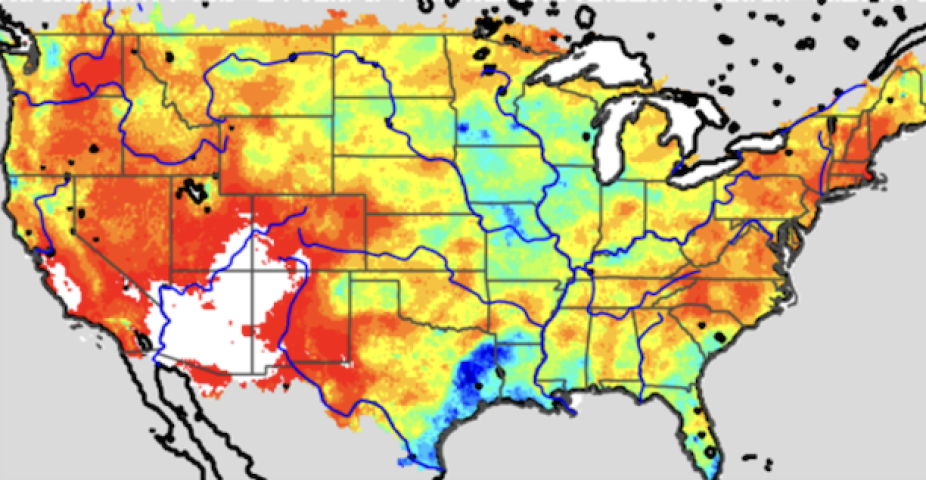
Development of the Gridded Meteorological Ensemble Tool (GMET) allows for quantification of uncertainty for station-based gridded precipitation and temperature datasets.

Development of the Gridded Meteorological Ensemble Tool (GMET) allows for quantification of uncertainty for station-based gridded precipitation and temperature datasets.

The Intermediate Complexity Atmospheric Research (ICAR) model is a simplified atmospheric model designed primarily for climate downscaling, atmospheric sensitivity tests, and hopefully educational uses. ICAR is a quasi-dynamical downscaling approach that uses simplified wind dynamics to perform high-resolution meteorological simulations 100 to 1000 times faster than a traditional atmospheric model and can therefore be used to better characterize uncertainty across numerical weather prediction models and climate models, and in dynamical downscaling.
Gutmann, E., I. Barstad, M.P. Clark, J. Arnold, and R. Rasmussen, 2016: The Intermediate Complexity Atmospheric Research Model. Journal of Hydrometeorology, 17, 957–973, doi:10.1175/JHM-D-15-0155.1
Gutmann, E., T. Pruitt, M.P. Clark, L. Brekke, J.R. Arnold, D.A. Raff, and R.M. Rasmussen, 2014: An intercomparison of statistical downscaling methods used for water resource assessments in the United States. Water Resources Research, 50, 7167–7186, doi:10.1002/2014WR015559
Gutmann, E.D., R.M. Rasmussen, C. Liu, K. Ikeda, D.J. Gochis, M.P. Clark, J. Dudhia, and G. Thompson, 2012: A Comparison of Statistical and Dynamical Downscaling of Winter Precipitation over Complex Terrain. Journal of Climate, 25, 262–281, doi:10.1175/2011JCLI4109.1
Barstad, I., and S. Gronas, 2006: Dynamical structures for southwesterly airflow over southern Norway: the role of dissipation. Tellus Series a-Dynamic Meteorology and Oceanography, 58, 2-18, doi:doi:10.1111/j.1600- 0870.2006.00152.x
Gutmann et al. (2016) describes the development of ICAR; the ICAR source code is available at https://github.com/NCAR/icar.
U.S. Army Corps of Engineers, Bureau of Reclamation, National Science Foundation
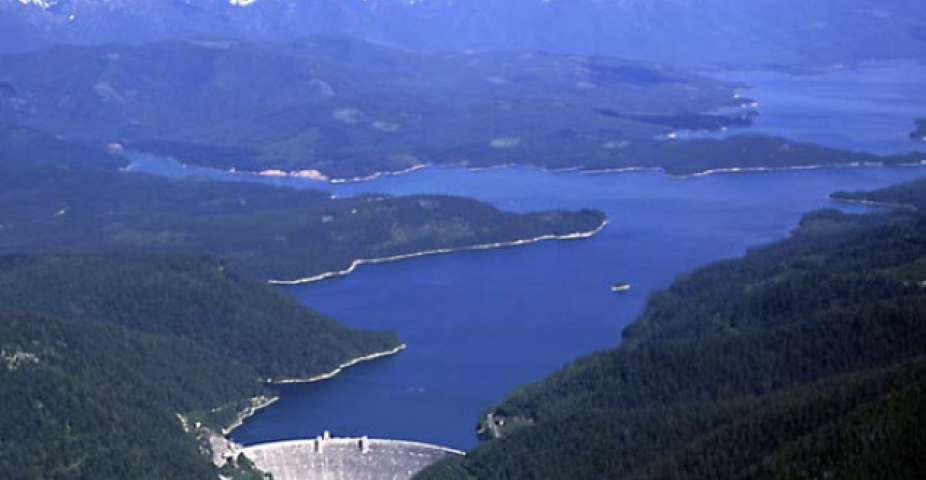
SHARP is being designed to facilitate the demonstration and evaluation of variations in the real-time forecasting workflow for short, medium and seasonal range streamflow predictions. To date, it has centered on forecasting in selected medium-sized basins in the continental US. As the figure below illustrates, the philosophy behind SHARP recognizes that model-based streamflow forecasting depends critically on not only the hydrologic and associated models (e.g., river routing), but on a range of key methods and datasets including meteorological analyses, downscaling of weather and climate forecasts, model parameter estimation (i.e., calibration), data assimilation, post-processing, and a robust capacity for verification and diagnostic evaluation.
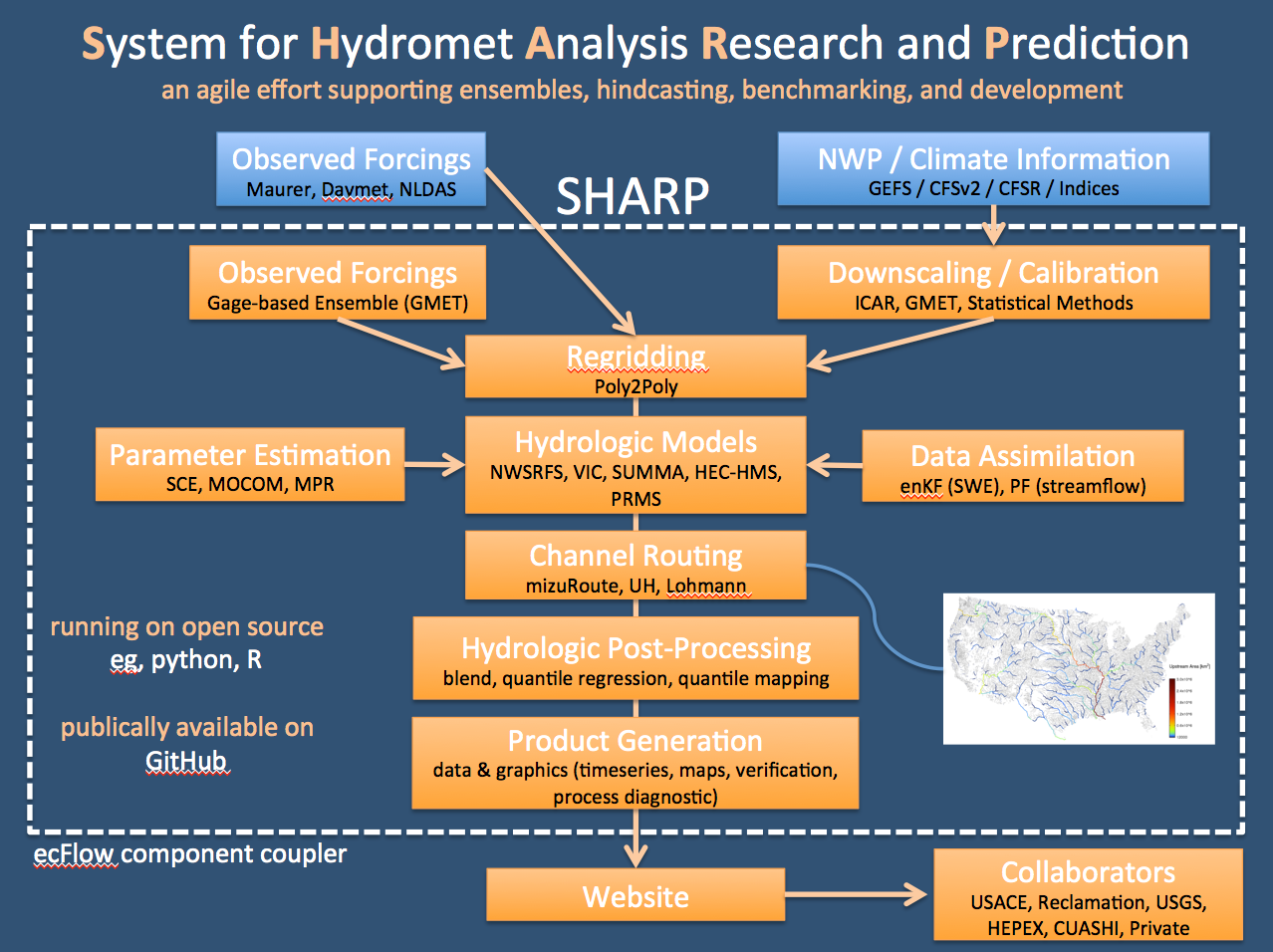
The Department of Interior Bureau of Reclamation (Reclamation), the U.S. Army Corps of Engineers (USACE), and the National Center for Atmospheric Research (NCAR) are partnering to evaluate: (1) the application of state-of-the-science forecasting methods and datasets in an experimental real-time operational platform serving a selection of watersheds across the contiguous U.S., and (2) the performance these methods and datasets in ‘over-the-loop’ forecasting. The first objective is motivated by a lack of experience with various advanced methods (such as data assimilation), implemented in an integrated operational workflow. The second objective is prompted by a perceived need to adjust parts of the current operational forecasting workflow in order to realize fully the benefits of various advanced or alternative methods in streamflow forecasting and water management support. A central hypothesis of this project is that over-the-loop forecasting will help unlock the potential of advanced forecasting methods to inform water resources management, yet there has been insufficient real-time, publicly available testing, demonstration, and evaluation of over-the-loop forecasting from the perspectives of workflow feasibility, product delivery reliability, and forecasting skill. This work is intended to help fill these gaps and further enhance and inform the methods that are being evaluated.
The SHARP system is being designed to produce retrospective and real-time streamflow forecasts:
The initial phase of this work has focused on individual catchments, and will next shift toward regional implementation over several pilot domains (e.g., the Pacific Northwest).
Andy Wood (NCAR, PI) and Bart Nijssen (U. Washington, Co-PI)
Funding and guidance for the project are primarily provided by the Bureau of Reclamation and the US Army Corps of Engineers, with additional funding support from NOAA.
Advancing Streamflow Prediction for Water, Energy, and Hazard Management
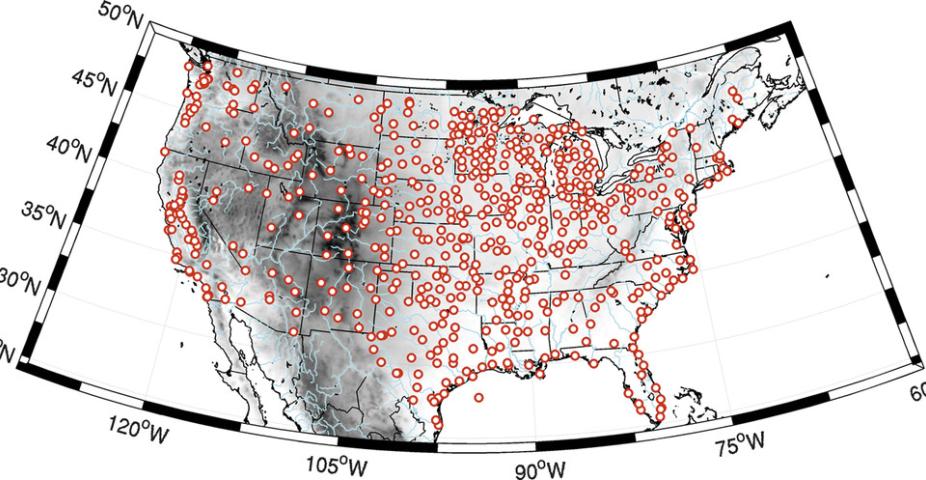
As part of NASA and NREL funded projects, a new method has been proposed and demonstrated for the long-term estimate of the wind speeds at a target site, a key step in wind resource assessments (Vavyve et al. 2013, Zhang et al. 2015). Analog ensemble (AnEn) techniques have been used with success for short-term weather predictions (e.g., Delle Monache et al. 2013). In the context of the wind resource assessment, the analog-ensemble method draws on the information contained in the historical data of multiple physical quantities over the period these data overlap with the observations (known as training period; typically 365 days) of the quantity of interest (known as predictand; the wind speed in this study). The relationships derived within the training period are then applied to reconstruct the on-site wind speed over the period for which there are no observations (hereafter referred to as reconstructed period, e.g., the past 20 years before the measurement campaign started).
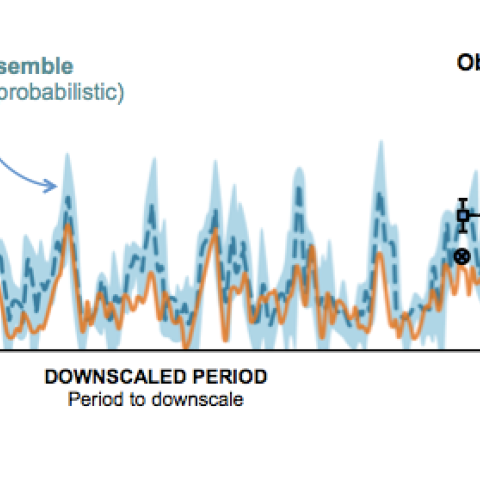
Sketch of the functioning of the Analog Ensemble (AnEn) method for one analog predictor, the analog trend reduced to one time step, and when retaining the best three analogs.
More precisely, this is a three-stage process that is executed independently at every target site for every hour t of the reconstructed period, as sketched in the figure. First, the historical value of multiple physical quantities (known as analog predictors; e.g. wind speed itself, wind direction, pressure, etc.) is retrieved for a time window (known as an analog trend) centered around time t (black dot in Fig. 1). The analog predictors are selected beforehand based on their known or anticipated correlations to the predictand. Second, other historical cases with conditions similar to those in the target window are identified (known as analogs) by looking at a time window (known as analog search window) centered around the same hour of the day for every day in the training period, and ranked by closeness of match. Analogs may therefore come from any day the training period. Using multiple predictors helps distinguish the analogs by identifying specific weather regimes relevant to the predictand. Third, the K best analogs (K the number of analogs; black circles) are selected, and the corresponding observed values of the predictand are retrieved (black squares). The latter constitute the ensemble members for hour t.
The final result is the analog ensemble, i.e., a set of K wind speed values for every hour t of the reconstructed period. The assumption is that if analogs are found, their errors will likely be similar to the error of the historical time step to reconstruct, error that can then be inferred from them. As shown by Vavyve et al. (2013) and Zhang et al. (2015):

The Climate Risk Management engine (CRMe) is an extensible, efficient NCL-based code set (with capability to integrate R packages) used to process and analyze large climate data sets (daily or monthly) from a variety of differernt sources (observations, model output) and on any horizontal resolution (global, regional, local). CRMe can handle various processing tasks such as:
CRMe provides consistent data provenance by preserving metadata from source datasets and implementing a structured metadata schema with controlled vocabulary. These provisions enable downstream applications (such as Open Climate GIS) and enable for controlled extensible search.
CRMe implements a simple form of workflow control and is flexible to be run on a desktop, a server, or a supercomputer. The result is that CRMe can take a ~1 TB dataset of high resolution global observational data and compute 1600+ calculation datasets and visualize these in a matter of hours.
CRMe employs workflow parallelization by dataset, so scores of climate model datasets can be run simultaneously over multiple climate periods. CRMe can process 10+ TB of CMIP5 climate data into several hundred sector-oriented indices with a turn-around time of a few days.
CRMe supports "Big Data"-sized problems (e.g., 100+ years of global data at half degree grid spacing, or 60+ years of global data at quarter degree grid spacing).
These capabilities, coupled with the CRMe Viewer, provide powerful new ways to browse and compare large sets of climate data in past and future climates.

4-D relaxation ensemble Kalman Filter (4D-REKF) data assimilation and forecasting system. 4D-REKF integrates and leverages the cutting-edge ensemble Kalman filter (ENKF) data assimilation scheme, which is currently being studied by many leading weather institutions and universities. 4D-REKF represents a new way to extend the traditional (intermittent) EnKF data assimilation method to a 4D continuous data assimilation paradigm that avoids the dynamic shocks associated with the intermittent EnKF processes. Through this project, NCAR will collaborate with SGCC/CEPRI to apply, specialize, and advance the 4D-REKF 4-D data assimilation scheme in the development of power-grid numerical weather prediction capabilities. The overarching goal of 4D-REKF is to build up a strong backbone technology of RTFDDA, Ensemble-RTFDDA, Climate-FDDA, and FDDA-LES modeling technologies and produce robust weather information to support electric power production, transmission, and services of SGCC.
Please direct questions/comments about this page to:
Director, National Security Applications Program